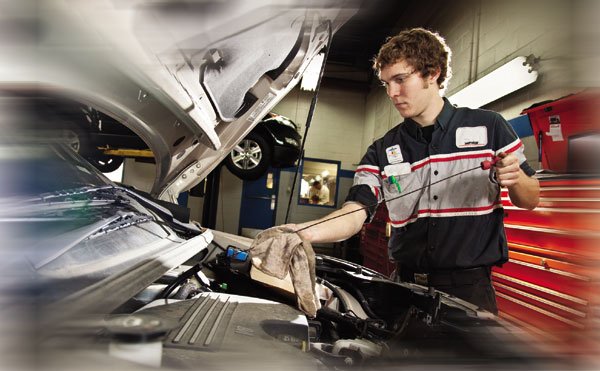The 55-year-old mechanic said he’s making more costly repairs
because his customers want to hold on to their cars longer.
The 55-year-old mechanic said he’s making more costly repairs because his customers want to hold on to their cars longer.
“The past three years have been the best three years ever. The economy has not hurt me at all – at all. It has helped,” Little said. “People aren’t buying new cars. They’ll put a couple thousand dollars into a car before they buy a new one.”
Last year, auto repair garages in the U.S. reported $36 billion in sales, according to estimates from the Automotive Aftermarket Industry Association. That’s up 10.5 percent from 2007.
This year, the auto parts trade group estimates sales for repair garages to jump nearly 5 percent from last year.
“There isn’t any big mystery here; people are opting for something they think is less expensive than a new vehicle and relying more on their older vehicles,” said Ron Pyle, president of the Automotive Service Association, a trade group for repair shops.
That line of thinking is shared by Rebecca Lee of Diamond Bar.
The repairs on her 2000 Toyota Corolla are coming with increased frequency, the most recent being a $400 bill to replace a power steering pump and belt. But a new car, the Hollywood hotel concierge says, isn’t in the cards. The vehicle – with about 150,000 miles on it, will be around “until it dies,” she said.
“I figure it is more worth it to pay for a couple of repairs along the way instead of investing in a brand new car,” the 23-year-old said.
From 1999 through 2007, Americans purchased more than 16 million vehicles annually. But the number slid to just 10.4 million in 2009 and has rebounded only slightly. The industry is on track to sell about 12.5 million light vehicles this year.
Analysts said that consumers have delayed buying new vehicles because they are concerned about their jobs and the sluggish economy. That means there are more older cars on the road, and those vehicles require maintenance and repairs. The average age of a car in the U.S is now 11 years old, according to auto information company R.L. Polk&Co. The average light truck’s age is now 10.1.
But not all are benefiting from the uptick in old cars.
At MD Automotive in Westminster, owner Mark DiBella said business has been “a roller coaster ride” since 2008. After a busy early summer, business in August “just turned off” as the debt ceiling debate roared and the stock market fluctuated wildly, DiBella said. Sales are down this year compared with the same period in 2010, he said.
“People are just holding back spending any money,” he said.
Mitch Schneider, owner of Schneider’s Auto Repair in Simi Valley, said that although profit was up in August it is down for the year because he hasn’t passed on increased material costs to his struggling customers.
“Everybody is so tentative because nobody can get a handle on where it is going,” Schneider said, referring to the economy.
But Kathleen Schmatz, president of the Automotive Aftermarket Industry Association, said if the economic bad news keeps rolling, independent repair shops may benefit.
That is unless things turn “real terrible,” she said, then it will be “bad for us all.”
“As long as it is just medium bad, it generally bodes pretty well for the repair shop,” she said.
Little, the Culver City mechanic, said his business didn’t slow in August despite dire headlines. The garage’s percentage of profit, revenue and volume have increased by double digits each year since 2008, he said.
“My only problem is getting the work done,” Little said.












